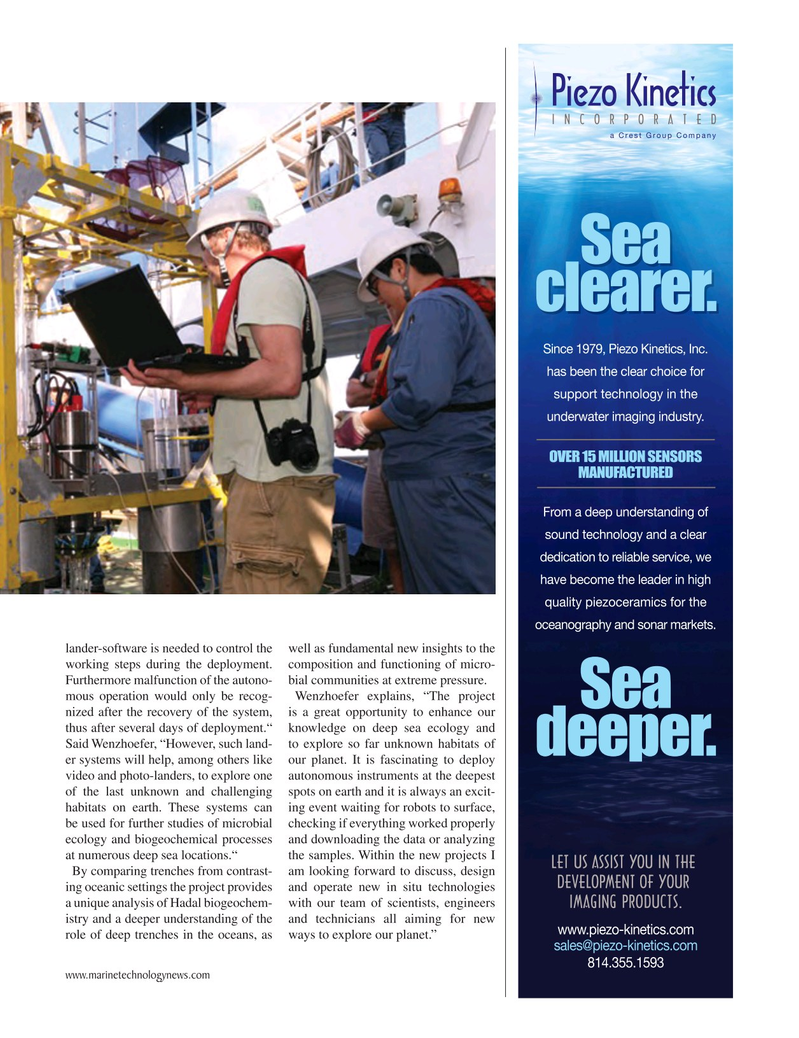
Page 39: of Marine Technology Magazine (September 2015)
Ocean Observation: Gliders, Buoys & Sub-Surface Networks
Read this page in Pdf, Flash or Html5 edition of September 2015 Marine Technology Magazine
lander-software is needed to control the well as fundamental new insights to the working steps during the deployment. composition and functioning of micro-
Furthermore malfunction of the autono- bial communities at extreme pressure.
mous operation would only be recog- Wenzhoefer explains, “The project nized after the recovery of the system, is a great opportunity to enhance our thus after several days of deployment.“ knowledge on deep sea ecology and
Said Wenzhoefer, “However, such land- to explore so far unknown habitats of er systems will help, among others like our planet. It is fascinating to deploy video and photo-landers, to explore one autonomous instruments at the deepest of the last unknown and challenging spots on earth and it is always an excit- habitats on earth. These systems can ing event waiting for robots to surface, be used for further studies of microbial checking if everything worked properly ecology and biogeochemical processes and downloading the data or analyzing at numerous deep sea locations.“ the samples. Within the new projects I
By comparing trenches from contrast- am looking forward to discuss, design ing oceanic settings the project provides and operate new in situ technologies a unique analysis of Hadal biogeochem- with our team of scientists, engineers istry and a deeper understanding of the and technicians all aiming for new role of deep trenches in the oceans, as ways to explore our planet.” www.marinetechnologynews.com
MTR #7 (34-49).indd 39 MTR #7 (34-49).indd 39 9/1/2015 3:49:36 PM9/1/2015 3:49:36 PM

 38
38

 40
40
